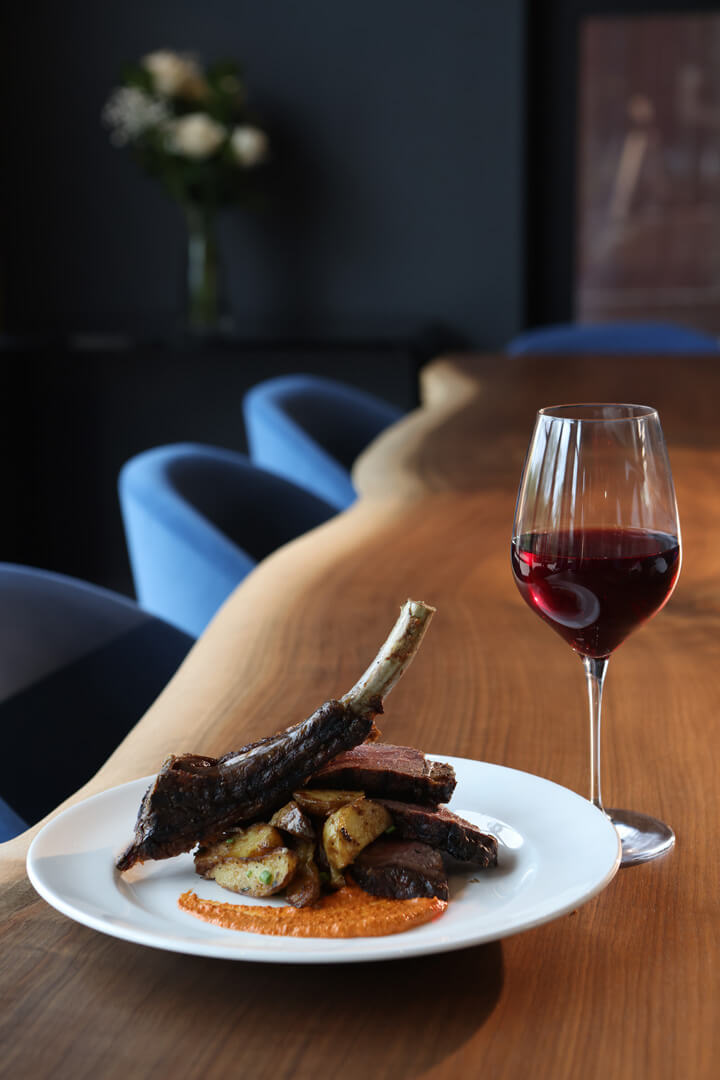Do you freeze when the waiter asks you what wine you want with your meal? When so many options exist, does it sometimes feel impossible to pick the right one? Well, not to worry. Keep reading to learn everything you need about wine and food pairing and how you can apply these skills to your meal at Cleaver & Cocktail!
What Is Wine Pairing?
One simple goal when wine pairing is to make your wine and food taste better together than they would on their own.
Our ancestors of centuries past paired their wine with their food. However, the modern trend of wine and food pairing we’ve come to know emerged when winemakers began promoting their wines as complements to specific meal offerings.
Wine and Food Pairing Guide
Food and wine pairings should enhance the experience of eating and drinking.
There are no “set in stone” rules for food and wine pairings (much of it is personal preference). Yet, you can follow some simple guidelines that help you pick the perfect wine for whatever type of meal you’re planning:
- Match the wine to the most prominent element of the dish (most wine connoisseurs recommend pairing wine with the sauce of a dish rather than the meat).
- Pay attention to the six flavor profiles, acidic, fatty, bitter, salty, sweet, and spicy.
- Remember that red wines have more bitterness, white and rosé wines have more acidity, and sweet wines have more sweet notes.
- There are two main types of wine pairings:
- Congruent wine pairing – when you pair two similar flavors together that amplify each other (e.g., a glass of sweet wine with chocolate).
- Contrasting wine pairing – also known as a complementary pairing; when one flavor cuts through and balances out another (e.g., a glass of fruity and semi-sweet wine to cut through a spicy dish).
The Six Flavor Profiles
- Salt – the best pairing is a sparkling or acidic wine
- Acid – pick a wine that is less than or matches the acidity of your food
- Fat – fatty foods pair well with wines that are high in tannins
- Bitter – avoid congruent pairings when it comes to bitter food and wines
- Sweet – if the wine is less sweet than your food, the flavor of the food will overwhelm it; avoid wines with high tannin levels
- Spicy – spicy food can increase the bitterness and decrease the sweetness and body of your wine
Classic Wine and Food Pairings
- Dry white wine
These wines, like Sauvignon Blanc and Pinot Grigio, have fantastic acidity. Pair these wines with roasted vegetables, oysters, goat cheese, fresh herbs, light sauces, and grilled fish.
Dry white wines tend to carry flavors of pears, lemons, melons, and sweet spice. These flavors are perfect for making congruent wine pairings.
- Sweet white wine
Wines like German Riesling, Pinot Gris, Chenin Blanc, or Gewurztraminer don’t always have to go with dessert. Their sweetness is also the perfect pairing for spicy dishes.
These wines often have flavors like green apple, lime, and white peach, which happens to be perfect for spicy Asian dishes, salty dishes, cheddar, gouda, cured meat, and desserts.
- Rich white wine
You can pair these wines with creamier dishes. They are less acidic and have bold fruity flavors like pear, lemon, apple, melon, and vanilla.
Pair Chardonnay, Roussanne, or Viognier with rich fish, white meat, and starchy foods. Certain ones are excellent with grilled lobster, other seafood, and roasted vegetables.
- Sparkling wine and champagne
These sparkling delights have the power to cut through salty food and balance out savory meals. Pair them with grilled fish and roasted vegetables.
Sweet sparkling wines (e.g., Moscato d’Asti or Asti Spumante) are excellent dessert wines.
- Light red wine
Pinot Noir, Gamay, and Barbera have earthy flavors and go well with fatty fish (e.g., salmon or tuna), lean red meat, lamb, pork, and venison.
One light red wine, Shiraz, has a spicy flavor that pairs well with grilled meat. Just ensure the spice levels of your wine and food are the same.
- Medium red wine
These versatile wines pair well with many dishes. Pair Cabernet Franc, Merlot, or Zinfandel with white meat, red meat, cured meat, salad, or tomato-based Italian pasta.
- Full-bodied red wine
Full-bodied red wines are bold and high in tannins, which are great for cutting through fatty foods.
Examples of a full-bodied red wine include Malbec, Cabernet Sauvignon, or a Bordeaux blend. These can refresh your palate after a bite of something sweet like chocolate or decadent like goat cheese and perfectly cooked meat.
- Dessert wine
Sweet dessert wines go with dark chocolate, cheese, other sweets, and salty nuts.
- Rosé wine
Rosé is the best of both worlds. It has the crisp acidity of white wine but the fruitiness of red wine. Rosés are perfect to pair with soft and hard cheeses, cured meat, roasted vegetables, as well as spicy seafood, and grilled chicken or fish.
Cleaver & Cocktail
At Cleaver & Cocktail, we value our craft. If you have any questions, our staff is here to answer any questions or help make suggestions to ensure your meal is the best it can be. To get an idea of what to expect when you visit our restaurant, here is our drink menu:
To schedule a reservation, please call after 5:00 p.m. Tuesday through Saturday at (314) 530-9700. We can’t wait to serve you!

